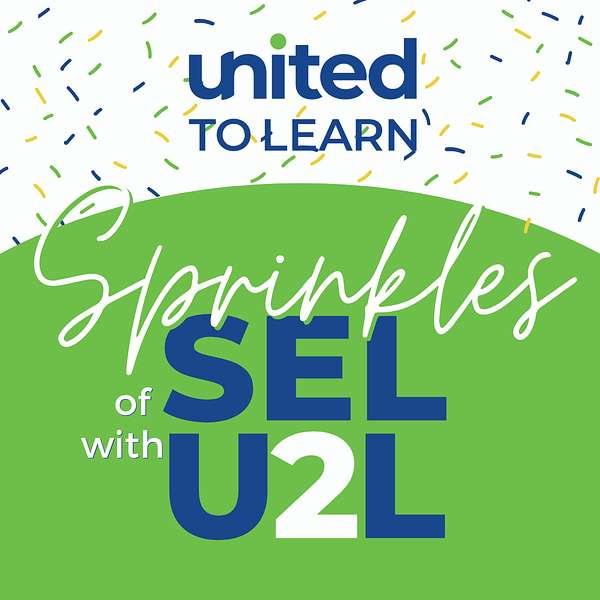
Sprinkles of SEL with U2L
This is a podcast about social emotional learning (SEL), wellness, neuroscience and healthy habits for educators and anyone in the education space.
Sprinkles of SEL with U2L
S3 E10: Conflict Resolution
Conflict is a part of life, but it doesn’t have to be messy! Join us for our season finale as we explore the nature of conflict, why it can be difficult to navigate, and practical strategies for resolving conflict with clarity, emotional intelligence, and confidence.
CITATIONS
Ames, D. R., & Flynn, F. J. (2007). What breaks a leader: The curvilinear relation between assertiveness and leadership. Journal of Personality and Social Psychology, 92(2), 307-324. https://doi.org/10.1037/0022-3514.92.2.307
Bazerman, M. H., & Neale, M. A. (1992). Negotiating rationally. Free Press.
Botvinick, M. M., Cohen, J. D., & Carter, C. S. (2004). Conflict monitoring and anterior cingulate cortex: An update. Trends in Cognitive Sciences, 8(12), 539-546. https://doi.org/10.1016/j.tics.2004.10.003
Durlak, J. A., Weissberg, R. P., Dymnicki, A. B., Taylor, R. D., & Schellinger, K. B. (2011). The impact of enhancing students' social and emotional learning: A meta-analysis of school-based universal interventions. Child Development, 82(1), 405-432. https://doi.org/10.1111/j.1467-8624.2010.01564.x
Eisenberg, N., Spinrad, T. L., & Eggum, N. D. (2006). Emotion-related self-regulation and its relation to children's maladjustment. Annual Review of Clinical Psychology, 57, 517-543. https://doi.org/10.1146/annurev.psych.57.102904.190201
Galinsky, A. D., Maddux, W. W., Gilin, D., & White, J. B. (2008). Why it pays to get inside the head of your opponent: The differential effects of perspective taking and empathy in negotiations. Psychological Science, 19(4), 378-384. https://doi.org/10.1111/j.1467-9280.2008.02096.x
Gordon, T. (2003). Teacher effectiveness training: The program proven to help teachers bring out the best in students of all ages. Three Rivers Press.
Goleman, D. (1995). Emotional intelligence: Why it can matter more than IQ. Bantam.
Gregory, A., Clawson, K., Davis, A., & Gerewitz, J. (2016). The promise of restorative practices to transform teacher-student relationships and achieve equity in school discipline. Educational Psychologist, 51(2), 99-113. https://doi.org/10.1080/00461520.2016.1155450
Jennings, P. A., & Greenberg, M. T. (2009). The prosocial classroom: Teacher social and emotional competence in relation to student and classroom outcomes. Review of Educational Research, 79(1), 491-525.
Kahneman, D., & Tversky, A. (1979). Prospect theory: An analysis of decision under risk. Econometrica, 47(2), 263-292.
Kunda, Z. (1990). The case for motivated reasoning. Psychological Bulletin, 108(3), 480-498. https://doi.org/10.1037/0033-2909.108.3.480
LeDoux, J. (2000). Emotion circuits in the brain. Annual Review of Neuroscience, 23, 155-184. https://doi.org/10.1146/annurev.neuro.23.1.155
McEwen, B. S. (2007). Physiology and neurobiology of stress and adaptation: Central role of the brain. Physiological Reviews, 87(3), 873-904. https://doi.org/10.1152/physrev.00041.2006
Porath, C. (2016). Civility in the workplace: A small investment that yields big results. Harvard Business Review. https://hbr.org/2016/06/civility-in-the-workplace
Siegel, D. J. (2012). The whole-brain child: 12 revolutionary strategies to nurture your child’s developing mind. Bantam.
